|
|
|
 |

 |
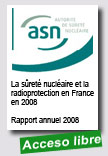 |
La sûreté nucléaire et la radioprotection en France en 2008 - Rapport annuel 2008
Autorité de sûreté nucléaire (ASN), April 2009, 527 p.
L’année 2008 a été assez satisfaisante au plan de la sûreté nucléaire, mais une action forte a été nécessaire pour que les exploitants maintiennent la rigueur nécessaire. La situation est restée délicate dans le domaine du nucléaire de proximité : les inspections de l’ASN se sont poursuivies, la plupart des établissements médicaux ont fait des efforts réels, mais la situation demeure très hétérogène.
|
Extraído de:
http://www.asn.fr/rapport-annuel-2008
|
 |
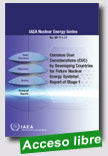 |
Common User Considerations (CUC) by Developing Countries for Future Nuclear Energy Systems: Report of Stage 1
This publication presents conclusions drawn by experts from developing countries that are considering deployment of nuclear power plants in the near term or are making projections up to 2050. It is intended to promote an early and frequent dialogue between technology users and technology holders. The timing and availability of innovative technology is an important part of |
future dialogues and activities that might enable user consideration of small and medium sized reactors, in addition to the larger reactors that are widely deployed today. The information presented in this publication will be useful to a number of stakeholders and decision makers as they consider the development of nuclear power plants and associated fuel cycle facilities for domestic deployment or export.
Extraído de:
http://www-pub.iaea.org/MTCD/publications/PubDetails.asp?pubId=8064
|
 |
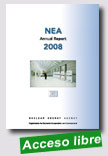 |
NEA Annual Report 2008
Nuclear Energy Agency (NEA), 27-APR-09, 48 p.
At the end of 2008, a total of 345 reactors were connected to the grid in OECD countries, constituting about 83% of the world’s total nuclear electricity generating capacity and
about 22% of the total electricity supply in the OECD area. During 2008, no new reactors were connected to OECD country grids, one was shut down (the Bohunice-2 reactor in the Slovak Republic was closed on 31 December 2008 as a condition to the country’s accession to the European Union) and the fi rst |
concrete was poured for two reactors under construction in the Republic of Korea. Nuclear energy policies vary widely in OECD countries, and range from offi cial moratoria or phase-out policies (e.g. Austria, Belgium, Germany and Spain) to clear commitments to maintain nuclear power as a signifi cant component of the energy mix (e.g. France, Japan and the Republic of Korea). Nuclear power’s ability to enhance security of energy supply and to provide competitively priced, baseload electricity that is essentially free of greenhouse gas emissions led, in 2008, to several developments to either replace soon-to-be-retired capacity or to increase nuclear generating capacity in several OECD countries.
This publication is also available in French as: Rapport annuel 2008
http://www.nea.fr/html/pub/ret.cgi?id=6843
Extraído de:
http://www.nea.fr/html/pub/activities/ar2008/AR2008-trends.pdf
|
 |
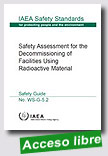 |
A large number of facilities using radioactive material, including nuclear power plants, research reactors, nuclear fuel cycle facilities, medical facilities and research facilities, are undergoing decommissioning now or are planned to be decommissioned in the near future. Decommissioning of these facilities requires adequate evaluation of safety in accordance with the relevant safety requirements and criteria. This Safety |
Guide provides recommendations for the development and review of safety assessments for decommissioning activities. It is intended to assist regulators, operators and supporting technical specialists in the application of a graded approach to the development and review of safety assessments.
Extraído de:
http://www-pub.iaea.org/MTCD/publications/PubDetails.asp?pubId=7999
|
 |
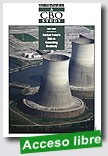 |
Nuclear´s Power Role in Generating Electricit
U. S. Congressional Budget Office, May 2008, 46 p.
CBO issued a study today examining possible future private investment in new nuclear power plants. The extent of such investment depends not only on possible charges for carbon dioxide (if the Congress adopts climate change legislation) but also on existing incentives provided for such plants in the Energy Policy Act (EPAct) of 2005.
The Energy Information Administration (EIA) projects that demand for electricity in the United States will increase by 20 percent by the end of the next decade. Most of the additional |
demand would likely be met by conventional fossil-fuel technologies without the incentives in EPAct or the prospects of a market price on carbon emissions.
Carbon dioxide charges of about $45 per metric ton would probably make nuclear generation competitive with conventional fossil fuel technologies as a source of new
capacity and could lead utilities to build new nuclear plants that would eventually replace existing coal power plants. At charges below that threshold, conventional gas technology would probably be a more economic source of baseload capacity than coal technology. Below about $5 per metric ton, conventional coal technology would probably be the lowest cost source of new capacity.
EPAct incentives would probably make nuclear generation a competitive technology for limited additions to base-load capacity, even in the absence of carbon dioxide charges. However, because some of those incentives are backed by a fixed amount of funding, they would be diluted as the number of nuclear projects increased; consequently, CBO anticipates that only a few of the currently proposed plants would be built if utilities did not expect carbon dioxide charges to be imposed.
Uncertainties about future construction costs or natural gas prices could deter investment in nuclear power. In particular, if construction costs for new nuclear power plants proved to be as high as the average cost of nuclear plants built in the 1970s and 1980s (adjusted for inflation), or if natural gas prices fell back to the levels seen in the 1990s, then new nuclear capacity would not be competitive, regardless of the incentives provided by EPAct. Such variations in construction or fuel costs would be less likely to deter investment in new nuclear capacity if investors anticipate a carbon dioxide charge, but those charges would probably have to exceed $80 per metric ton in order for nuclear technology to remain competitive under a scenario with high construction costs and low natural gas prices.
Extraído de:
http://cboblog.cbo.gov/?p=92 |
 |
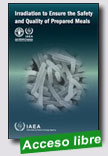 |
Irradiation to Ensure the Safety and Quality of Prepared Meals
IAEA, 2009, 375 p.
This publication presents the results of an FAO/IAEA Coordinated Research Project (CRP) on the use of irradiation to ensure the safety and quality of prepared foods. There is an increasing worldwide demand for prepared and take-away meals. However, the traditional methods of preparing convenience foods via retort-processing and freezing are being replaced in favour of chilled foods, due mainly to their fresher |
and often more appealing appearance. Chilled prepared foods, however, are non-sterile and their heightened potential for microbiological contamination creates a considerable limitation to their shelf-life. The findings of this CRP demonstrate that radiation processing of prepared meals results in a safer product by eliminating existing pathogens, and thereby reducing health risks while extending the foods’ commercial shelf-life. This publication presents the findings of the CRP and offers a discussion of the possible further utilization and marketing of this new application of irradiation technology.
Extraído de:
http://www-pub.iaea.org/MTCD/publications/PubDetails.asp?pubId=7906
|
 |
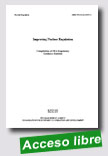 |
Improving Nuclear Regulation - Compilation of Regulatory NEA Guidance Booklets
Nuclear Energy Agency (NEA), 02-Apr-09, 208 p.
A common theme throughout the series of NEA regulatory guidance reports, or “green booklets”, is the premise that the fundamental objective of all nuclear safety regulatory bodies is to ensure that nuclear facilities are operated at all times and later decommissioned in an acceptably safe manner. In meeting this objective the regulator must keep in mind that it is the operator that has responsibility for safely operating a nuclear facility; the
|
role of the regulator is to oversee the operator’s activities as related to assuming that responsibility.
For the first time, the full series of these reports have been brought together in one edition. As such, it is intended to serve as a knowledge management tool both for current regulators and the younger generation of nuclear experts entering the regulatory field. While the audience for this publication is primarily nuclear regulators, the information and ideas may also be of interest to nuclear operators, other nuclear industry organisations and the general public.
Extraído de:
http://www.nea.fr/html/pub/ret.cgi?id=new#6275
|
 |
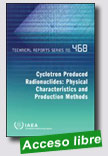 |
Cyclotron Produced Radionuclides: Physical Characteristics and Production Methods
IAEA Technical Reports Series, 2009, 266 p.
Application of radioisotopes has shown significant growth in the past decade, and a major factor contributing towards this growth is the availability of a large number of cyclotrons dedicated to the production of radioisotopes for medical applications. Although there are many articles in journals on cyclotrons and their use for radioisotope production, there is no single source of information on radioisotope production using cyclotrons which |
can be used by beginners. This publication attempts to address this deficiency. Its contains chapters on accelerator technology, theoretical considerations of nuclear reactions, the technology behind targetry, techniques on preparation of targets, irradiation of targets under high beam currents, target processing, target recovery, etc.
Extraído de:
http://www-pub.iaea.org/MTCD/publications/PubDetails.asp?pubId=7892
|
 |
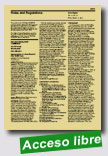 |
Implementation of a Dose Standard After 10,000 Years
US Nuclear Regulatory Commission (NRC), 13 March 2009, 20 p.
The U.S. Nuclear Regulatory Commission (NRC) is amending its regulations governing the disposal of high-level radioactive wastes in a proposed geologic repository at Yucca Mountain, Nevada. The final rule implements the U.S. Environmental Protection Agency’s (EPA’s) revised standards for doses that could occur after 10,000 years, but within the period of geologic
|
| stability. The final rule also specifies a range of values for the deep percolation rate to be used to represent climate change after 10,000 years, as called for by EPA, and specifies that calculations of radiation doses for workers use the same weighting factors that EPA is using for calculating individual doses to members of the public. |
| |
|
|
| |
|
|
|
|
|
